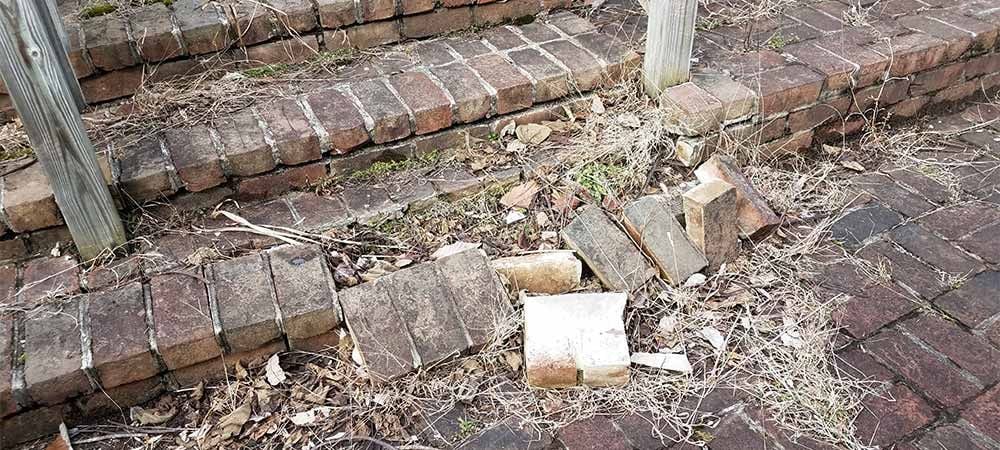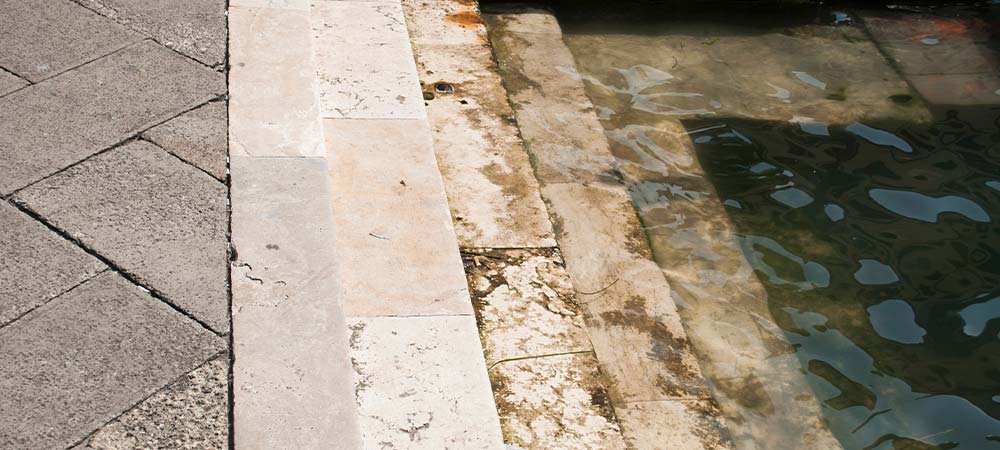Step by Step Guide to Brick Steps Repair

If your home or business has brick front steps leading to it, those steps may be starting to deteriorate, crack, and crumble. These damaged brick stairs are unappealing to see and they harm more than just your property’s curb appeal. Damaged bricks can cause structural instability and become dangerous to climb or descend.
Read on to see what you can do to repair brick steps. Then learn how Batchelder & Collins can help you by providing the replacement bricks or mortar needed to complete your masonry, brick repair, or refurbishment project.
Can Brick Steps Be Repaired?
The answer depends on the extent of the damage to the structure of the brick steps. If the bricks are unrepairable, they are usually replaceable. The first thing to determine is whether your bricks are the problem: Are they loose, cracked, or spalling bricks? Are you missing some bricks? Missing or loose bricks can be replaced with new bricks.
If the issue is not broken bricks, is the problem with the mortar joints? Do you have cracking, loose, or crumbling mortar? If so, it must be removed and replaced with new mortar, a process known as repointing. Understanding the issue will determine the steps you need to take to repair your broken or otherwise damaged steps.
How Do My Brick Steps Become Damaged?
Brick steps can become damaged in many ways. Repeated pressure and use can simply wear down any structure. However, the most likely reason your steps have become damaged is water and weather.
Water can soak your old bricks and trickle inside the structure through tiny hairline cracks. Then, when the weather grows cold, the water can freeze inside. Freezing causes the liquid to expand, putting pressure on the bricks and old mortar, which pushes out the brick structure, allowing the cycle to repeat.
The Hampton Roads area is no stranger to consistent moisture in the summer and brutal cold spells in the winter. Such variable weather conditions will impact your bricks’ integrity over time.
Repointing Your Brick Steps
Repointing brick steps is the most direct method of repairing a damaged exterior brick wall, brick steps, or other brickwork, as long as the bricks are intact. When you repoint brick, you repair mortar that has become loose and crumbling by replacing it with new mortar mix. Here are the steps for DIY brick repointing.
-
Cut Out Mortar Joints
The first step is removing all loose masonry joints using a grinder. You need to remove old mortar to a depth of three-quarters of an inch. Begin with the horizontal mortar, then the vertical. This creates a pocket that helps guide your work.
A masonry grinder with a vacuum attachment and a HEPA filter shop vac are recommended because the process creates a great deal of dust. An angle grinder and regular shop vac will work if you do not have the recommended tools. Just be sure to wear a respirator mask.
-
Mix Mortar
Next, you will need to mix fresh mortar. Be sure you are using the correct kind of mortar. Type S mortar is much harder and intended for rigid structural use. In contrast, Type N is more flexible to account for the regular pressure of people climbing and descending stairs, as well as handling future freeze/thaw cycles. Do not be taken in by additives claiming to make your mortar stronger. Properly mixed mortar should not need an additive to become solid and stable.
When mixing new mortar, make it wetter than normal so that it squeezes through the grout bag easier. Go little by little as you add water. Remember that you can always add more water, but you cannot take water away once it has been added.
-
Use a Grout Bag
Your grout bag is like a large pastry bag for icing a cake. It will make the process of placing the mortar into the joint much easier. Fill the bag about halfway, then twist it closed at the open end.
-
Place Into Joint
Use your mortar bag to pipe the mortar into the new joints and pockets you have created, much like writing on or decorating a cake. Use a pointing tool or brick trowel between brick courses to press the mortar into the joints. Next, use a flat jointer tool to press additional mortar in as needed until the joints are full.
When you have filled the joints with new mortar mix, use a wire brush to lightly brush off the excess mortar to clean the exterior brick.
-
Slick the Joint
Finally, run your flat jointer across the mortar. This will slick the joint to ensure that it remains waterproofed and sealed. When you use this technique, you do not have to use additional sealant. This is important because using sealant on horizontal surfaces causes water to sit on top of the material. In cold temperatures, the water can freeze solid, causing exceptionally slick surfaces that can lead to serious injury from slip-and-fall accidents.
Replacing a Loose or Missing Brick
If you have loose or missing bricks, they need to be replaced. The first step in replacing a damaged brick is to chisel away at the existing mortar. Removing the existing mortar opens up the area and allows you to work the loose brick free gradually. In the case of a missing brick, chisel away at the old mortar until the area is clean. Use a wire brush, shop vac, and water from your garden hose to keep the area clean continuously so that you have a clear view of your progress.
When the old mortar is gone, mix up a new batch, then use a brick trowel to apply it in half-inch layers to the space. Then apply a thin layer of fresh mortar to the replacement brick. Finally, gently and carefully work the replacement brick into the opening. Use your trowel to pack mortar into the spaces until it is flush.
Use your garden hose to wet the area thoroughly, then let the mortar dry entirely, which can take up to a week. Put no pressure on the brick until the mortar is completely dry. Soak the area periodically to help it maintain adhesion.
What Tools Will You Need to Repair Brick Steps?
Homeowners looking to undertake their own brick repair home improvement projects will need the right tools for the job. These include:
- Safety glasses
- A trowel
- A tuckpointing tool
- A chisel
- Mortar mix
- Replacement bricks
We Have the Bricks You Need to Replace, Repair, or Rebuild Your Steps
If you need help with brick walls, brick steps, stucco, or other masonry or hardscaping needs for your old house or business, Batchelder & Collins is here to provide professional masonry supplies. Give us a call at 757-625-2506, or use our online contact form to place an order or schedule an appointment today.
Enjoy Your Backyard All Fall Long

Now is the perfect time to take advantage of autumn’s mild days to prepare your backyard for the cold months ahead. But who’s to say you can’t still enjoy your backyard, spending time with your family, and cooking outdoors all fall long.
"*" indicates required fields




